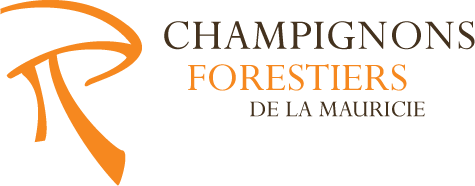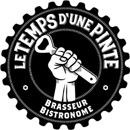Wild mushrooms are food products associated with five major risks that must be properly controlled to ensure food safety for consumers through identification, safe and hygienic conditions at harvest, hygienic conditions throughout processing and packaging, health conditions of pickers and plant workers, and storage conditions in distribution networks and market stalls. The first four critical elements directly concern processing and packaging plants.
Certain criteria must be met by processing and packaging plants to ensure mushroom safety, quality and traceability:
-
Successfully complete an approved training course on mushroom identification, picking and packaging, leading to certification of the packaging plant, or have its expertise recognized;
-
Obtain and maintain permits and certificates that meet the Food Products Act (chapter P-29) and confirm if a requirement related to the CFIA applies;
-
Confirm reception of fresh wild mushrooms from pickers, validate their identification, quality and marketable quantities and sign receipts. The processing or packaging plant must keep these purchase records for a period of 3 years;
-
Possess a processing or packaging area that conforms to regulations; obtain and maintain a license that conforms to the Food Products Act (chapter P-29.);
-
Identify containers used for the storage and sale of mushrooms with the name of the packaging plant, the license number of the company, the tracking number and recognized information, such as species name, quality grade, weight (or volume), and any other information relevant to the product.

Safety and Hygiene: Principle of the 5 Ms
Matter:
-
Check the identification of the mushrooms, their freshness and health;
-
Do not attempt to recuperate unfresh or damaged, unhealthy mushrooms through drying or processing;
-
Complete a purchase record the picker uses to confirm the safety, hygiene and traceability of the mushrooms;
Matter refers to the origin, safety (elimination of corrupted or questionable food), traceability, labeling, temperature or product storage conditions.
Method:
-
Work method refers to cooling, heating, cleaning, sanitation and elimination of cross-contamination.
-
Do not break the cold chain at any time (keep fresh products refrigerated);
-
Pay attention to unwanted contamination that can affect product quality: have a dedicated fridge (single-purpose only); do not put mushrooms in contact with meat or raw fish.
Main-d’oeuvre (Labour):
-
Keep hands clean and free of chemical contaminants (oil, insect repellent, etc.);
-
Wash hands with soap and water after using the toilet, meals and breaks, smoking, mosquito repellent application or after contact with other workers (coughing, sneezing, wiping the nose);
-
Keep a kit of bandages and plastic gloves in case of cuts or wounds; injuries should be covered with a dressing or glove;
-
Wear clean clothing that is in keeping with food handling.
Material:
-
Clean and sanitize equipment, refrigerators, freezers, etc.;
-
Use drinking water to clean knives, coolers and picking baskets (perforated plastic or wicker baskets);
-
Keep the transportation vehicle clean;
-
Clean coolers and ice packs between uses.
Milieu :
-
Place mushrooms far from contaminants and away from the floor and walls;
-
Furnish all processing and packaging areas with vermin traps; trap locations should be indicated on a plan and should not contaminate food products;
-
Prevent pets from accessing processing or packaging areas (saliva, hair and parasites);
-
Keep a record of all vermin captured.
Processing or packaging plant
The processing or packaging plant must avoid all negative effects on the processing, packaging and transportation of mushrooms (chemical, biological, microbiological or physical cross-contamination). In addition, the following principles must be respected:
-
Confirmation of product reception;
-
Confirmation of mushroom identification;
-
Validation of quantity and quality through signed delivery and traceability receipts;
-
Conservation of purchase and traceability records for at least 3 years;
-
Provision of a MAPAQ- or CFIA-approved packaging area
-
Labeling of containers used in the delivery of mushrooms (name, company and traceability numbers);
-
Labeling that conforms to regulations in effect.
Rooms used to refrigerate mushrooms are referred to as dry rooms as they do not involve the high levels of humidity required for vegetables or meat. The dehumidifier continuously removes moisture from the air and keeps mushrooms dry, thereby preventing the growth of surface mould or bacteria (pathogenic or otherwise). Fruit bodies lose weight, but shelf life is extended.
Packaging and labeling for retail
The packaging plant must meet minimum requirements for the labeling of mushrooms and processed products, including but not limited to:
-
Identifying contents: name of the species, weight, traceability code;
-
Identifying company name, address, business or permit number;
-
Specifications: produit du Québec, biological product, compliance with the ACPFNL Requirements Specification for wild mushrooms of Quebec, keep refrigerated, or any other relevant information;
-
On the label for frozen mushrooms: Keep frozen.
When preparing for retail, the packaging plant must meet the following requirements:
-
The product must be processed, packaged and presented so as to protect it from damage caused by mechanical operations and microbiological, chemical or physical contamination;
-
The packaging must generate the least amount of environmental damage possible; where appropriate, recyclable and/or reusable packaging should be used; overpacking should be avoided;
-
Packaging materials must be of food grade, clean, suitable for the intended use and should not contaminate the food;
-
The film covering the 100 or 150 g containers for fresh food retail must be perforated with a half dozen holes the size of a toothpick to allow moisture released by the mushroom to evaporate, thus preventing the growth of bacteria and mould;
-
A listing of specific use directions or warnings for the merchant or user may be recommended, as needed; for processed products, other information may be required by law, such as a list of ingredients, etc.
Control and certification
Certification of compliance with the Requirements Specification on a voluntary basis for member plants is conducted every two years when, at the time of the company’s inspection, there are no major derogations detected and the plant demonstrates that any minor deficiencies are corrected in the weeks following inspection. If major deficiencies are found, the company must commit to correcting them and an inspection will take place during the next operating season. If a product intended for consumption is found to be non-compliant, it will be rejected and, if necessary, recalled.
The responsibility for demonstrating compliance with these guidelines belongs to the certificate holder or the permit issuer. Forms and records to monitor and prove the implementation of the Requirements Specifications are:
-
Records of purchases;
-
Records of mushroom products stored for sale;
-
Records of sales;
-
Traceability records;
-
Records of procedures and products used to clean the premises or facilities and to control pests and vermin.
































